Breaking Travel News investigates: Frankfurt Rhine-Main, Germany
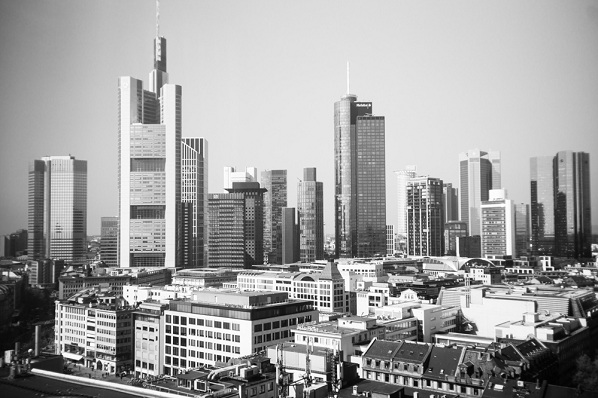
Welcoming more than 60 million passengers each year, Frankfurt Airport is one of the busiest in the world.
However, few visitors realise the airport is situated in one of the most beautiful regions of Germany.
Here Phil Sharp visits for Breaking Travel News to discover just what they are missing.
“Frankfurt am Main”, as a name, it feels a bit uncomfortable in the Anglicised mouth, but think of it as Stratford-Upon-Avon, Henley-on-Thames, or Fog-on-the-Tyne.
Frankfurt is one of the most visited places in Europe, but the city’s reputation as a place for business-only means the average stay is less than two days.
As such, the tourist board of the region are keen to keep some of the 60 million people who land or pass through Frankfurt Airport in the area, and show off what this part of west-central Germany has to offer.
Straight from the airport I head to Bad Homburg, a journey of less than 30 minutes and the urban, financial-powerhouse of Frankfurt already seems a long way away.
This is a spa town; ‘Bad’ can translate as this.
The spa itself is the luxurious Kur-Royle.
The setting and building invoke the latter period of the German Empire, while offering everything you would expect from a top quality treatment centre.
The adjacent casino offers a another way of passing the time and could perhaps present an appealing contrast if you want to get out of the city but still want to try your luck.
Our stay in Bad Homburg is short and after a night in Maritim Hotel we travel south-west to Hochheim.
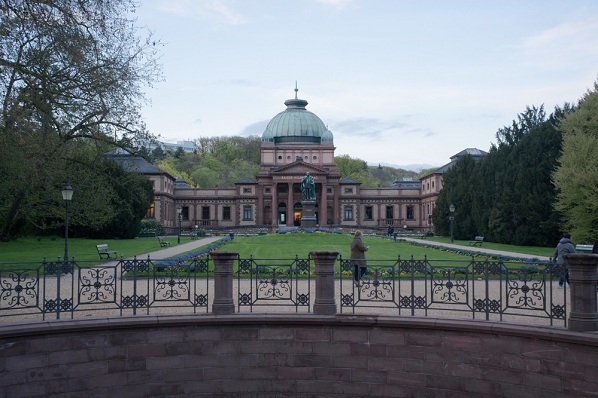
The spa town of Bad Homburg
This is wine country, and despite being only a few miles from the end of one of the busiest runways in Europe, it feels pretty rural.
Restoration work is underway at the beautiful church of St Peter & Paul and it’s worth hearing its survival story, from slipping land, encroaching urbanism and unexploded WWII bombs.
Historically this area stood at the crossroads of two worlds, firstly the Limes Wall separated the Roman Empire from the Northern Tribes and latterly the region separated the Protestant north/east from the Catholic south/west.
Despite this rich history it’s the production of wine that is the focus of our visit.
Not that I’m complaining! As we tour the vineyards, we’re offered a bottomless glass of Reisling and every drop tastes delicious.
If wine is your thing then visit the Daubhausen, overlooking the area as it slopes towards the River Main.
We follow the route of the River Main as it joins the nearby Rhine at Mainz and from there continue west along the north bank to Rudesheim am Rhine.
River tours of the Rhine are popular and Rudesheim feels like a town keen to make a few quid from passing travellers.
The most popular street is the Drosselgasse, its southern-end populated by tacky shops and the northern end by overpriced restaurants.
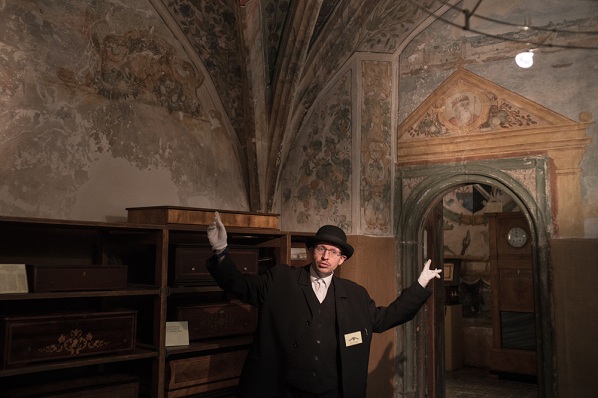
The slightly surreal Siegfried’s Mechanical Music Cabinet Museum
We visit Siegfried’s self-playing musical instruments museum, which walks a fascinating line between a nightmare where automatons play out of key versions of Yesterday and a genuinely interesting history of recorded music.
I’d recommend it, especially as its right next to the cable car that will lift you out of Rudesheim and up to the impressive Germainia Monument.
From here there are genuinely beautiful views across the whole region; it is, after all, part of the Middle Rhine World Heritage site.
We walk through the Niederwald and get the cable car down to Assmannshausen, there we eat some of the best soup I’ve ever tasted before boarding and river ferry and looping back round to Rudesheim.
If the starting point is a bit disappointing the rest the rest of this excursion certainly isn’t, and it exemplifies what this region has to offer.
If Hochheim and Rudesheim offer a look at a more traditional Germany then our next stop, Darmstadt is somewhat different.
A much larger town, the central area of Darmstadt was largely destroyed in WW2 and because of this the town feels much more contemporary.
Thankfully the artists’ colony known as Mathildenhöhe survived the firestorms of 1944 and for anyone with a passing interest in architecture or the Art Nouveau it’s not to be missed.
As a pleasing contrast to the modernism we eat in the Restaurant/hotel Bockshaut, family run since at least 1795 and full of character.
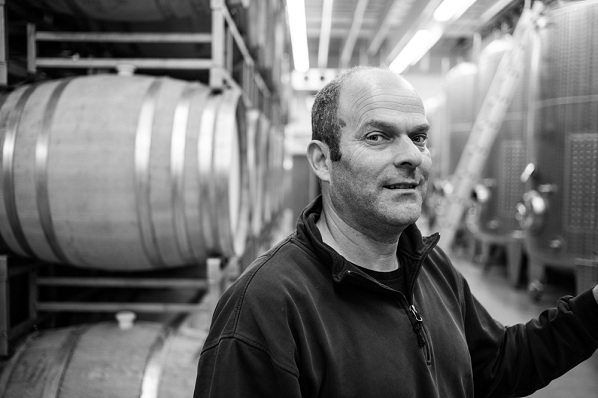
The region is famous for its exquisite wine
It’s back to traditional Germany next as we move onto the Forest of Odes, first Michelstadt then Erbach.
Erbach Castle is a treat, now a museum you really get a feel for the aristocrats who lived here in centuries past, atmospheric rooms are packed with hunting trophies, suits of armour and renaissance furniture.
Erbach also has something of an arts and craft scene with excellent handmade and painted pottery available throughout the town.
This forest region south of Frankfurt has more to offer as we visit Amorbach and the beautiful Amorbach Abbey, the stately rooms and tales of entwined royal families are interesting but it’s the rococo church and live performance of Bach and Brahms on the colossal organ that really impresses.
We lunch at the Erlebnisbahnhof Gleis 1, a hotel/restaurant renovated from the former train station.
Amorbach should be on your list.
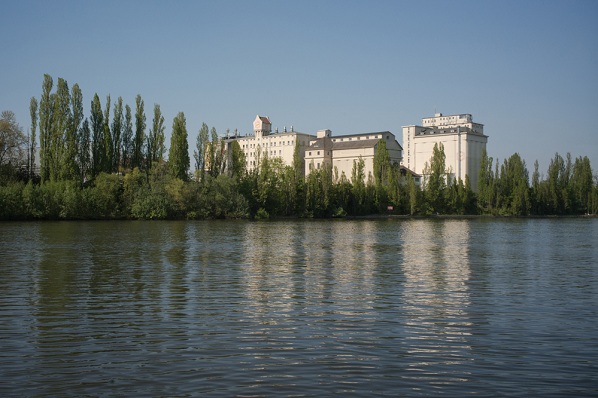
There is much to see just a short drive from the centre of Frankfurt
We slip out of the state of Hesse and into Bavaria for our penultimate stop in Aschaffenburg.
The town is dominated by the Johannisburg Castle, beautifully restored after its destruction at the end of WW2.
The castle holds exhibits of various kinds but the collection of Christian Schad paintings is excellent.
Aschaffenburg seems to value art with a new art quarter in development and various galleries dotted around the town.
Take an evening stroll along the river Main and the city almost feels Mediterranean.
There’s a cosmopolitan buzz about the place, it’s tempting to cycle the uninterrupted track along the Main back to Frankfurt, but we eventually take the easy option of the 35 minute drive back to our last stop.
But before we return to the small metropolis we pause on outskirts (the skyline is well in view) at Schneider-Obsthof, makers of sublime apple wine.
It’s hard to believe this idyllic setting is virtually within the city limits.
Even the traveller with only a few hours to spare should make an excursion and enjoy a tipple in this fine orchard.
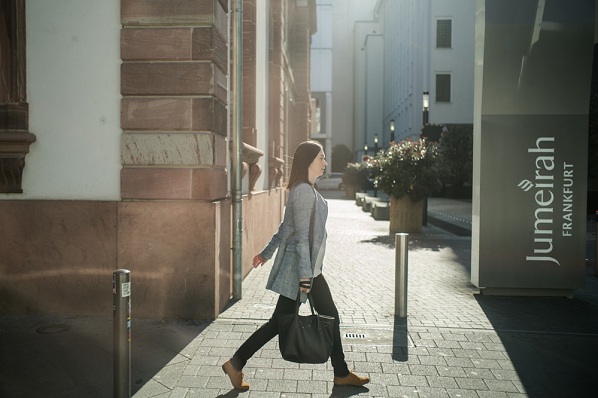
Jumeirah Frankfurt brings a luxury flourish to the city
Onwards to our final hotel, the lavish Jumeirah Frankfurt, my suite is the 25th floor and the views across the city are spectacular, it’s the kind of room where the lazier traveller could happily spend a couple days without venturing outside.
The first thing that strikes you about Frankfurt is the skyline, vast, glassy and anonymous, you can feel a little dwarfed and not in the romantic way that New York manages.
Thankfully the current building ethos is putting less emphasis on height and more on energy conservation and general ‘greenness’.
Other parts of the post-war city are currently undergoing re-construction, and faux-18th and 19th wood framed buildings are replacing them.
Thankfully, some of the finer bits of 20th century architecture have survived, for now.
There’s also some excellent modern art at the Schirn and the maze-like MMK.
We take a short cruise along the Rhine, past the anomalously situated new HQ for the European Bank, which overlooks some poignant river-side street art, we disembark and catch the Velo-taxi (a sort of clean, safe German rickshaw) back to the centre of town.
Frankfurt feels a bit like a city that it doesn’t know what it wants to be, cool, cultural modern European metropolis or austere financial powerhouse?
It goes a fair way to excel at being both, and what you don’t find in the city, as this trip proved, you won’t have to travel far to find what you’re looking for.
More Information
Find out more about the hidden gems of the Frankfurt Rhine-Main region on the official website.
Words and images: Phil Sharp

